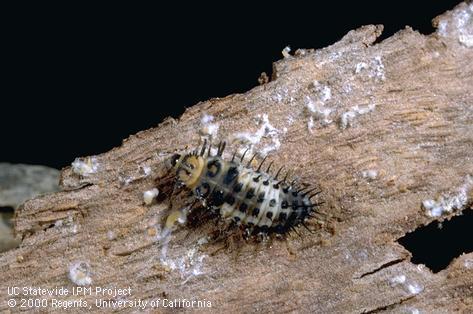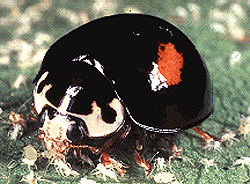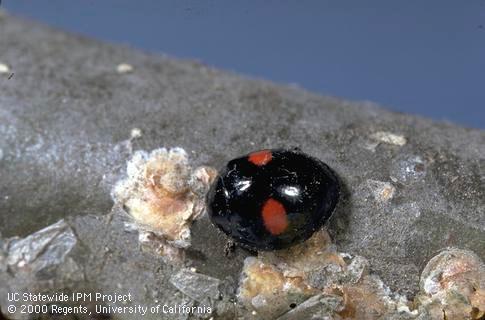


Lady beetles are easily recognized by their shiny, convex, half-dome shape and short, clubbed antennae. Most lady beetles, including this species, are predaceous as both larvae and adults. Young lady beetle larvae usually pierce and suck the contents from their prey. Older larvae and adults chew and consume their entire prey. Larvae are active, elongate, have long legs, and resemble tiny alligators. Many lady beetles look alike and accurate identification requires a specialist.
The twicestabbed lady beetle is one of the most common scale-feeding lady beetles, and both larvae and adults feed on a variety of species. Adults measure 3-5 mm (1/10-1/5 inch) long, are shiny black with two red spots on their elytra and have reddish undersides. Larvae are grey to black and are distinct from other coccinellids as they have prominent spines with multiple branches that look like spines on spines. Larvae of this and other scale-feeding coccinellids are often overlooked because they frequently feed hidden underneath the scale body or cover. Eggs measure about 1 mm (1/32 inch) in length and are laid either singly or in groups on their sides. This beetle undergoes complete metamorphosis and in warmer climates has several generations per year. This species can be confused with several other coccinellids that are also shiny black with two red spots on their elytra: Axion plagiatum, Chilocorus kuwanae, and Olla v-nigrum. When compared with these other species, the spots of C. orbus are located closer to the head.